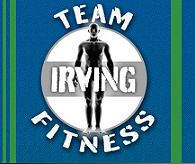What is the first thing that comes to your mind when you hear the term stretching? Many people answer, “Do you mean bending over and touching my toes?” This is a correct response; however, how many people do you know who can touch their toes? Let me answer that, “Not very many!”
In over ten years of training experience when I talk and demonstrate stretching techniques, one of the first things I notice is the blank stare that comes over individuals faces. The next thing that comes to mind are their questions. When do I stretch and how do I stretch? With so much information regarding stretching over internet and in fitness magazines, I can definitely see how individuals can become jaded. In this information driven age it is very difficult to determine proper education and proper technique. This is one of the main reasons I took it upon myself to write this piece. Stretching regardless of your regular exercise routine is one of the most important ways to prevent injuries over your lifetime. You may now be asking yourself what type of stretching? At Team Irving Fitness we start educating the basics of Static Stretching.
What is Static Stretching? Static Stretching is stretching while the body is a rest. Static literally means, “No Movement!” Static stretching is achieved gradually while holding a particular stretch for a minimum of a twelve count.
If all else fails with your daily workout routine, I encourage all individuals at a minimum to perform static stretching twice daily. One: Your morning stretch allows you to loosen up sore muscles from a workout, meditation (preparing your mind and body for the tasks of the day), and to warm-up old injuries (ligaments, tendons, and joints). Your morning stretch next to a healthy breakfast is what kick starts your day. During the day our connective structures become dehydrated and compressed with tension that is why your evening stretch is equally important. Two: Your evening stretch before bed allows you to decrease tension of the day, prepare the body for rest (increasing sleeping performance), and decrease delay onset muscle soreness (DOMS) from the days training schedule.
Static stretching is the best personal stretching technique because it requires little to no training and your entire body can be stretched in 10-15min. This technique is performed slow and methodical, not allowing you to rush and over stretch which may cause injury. Next, get in your desired position and hold the required stretch for a minimum twelve count. The twelve count allows the musculature on a stretch to relax increasing range of motion (ROM). While stretching you should feel a mild discomfort and a slight burn, but NEVER pain. Always be sure to stretch your body evenly in order to achieve consistent performance.
For visual demonstrations of Static Stretching techniques check out our YouTube Video Dynamic vs. Static Stretching .
Most common stretching positions are:
- Split straight leg toe touches (hamstrings)
- Upward dog (lower back/abdominal)
- Downward dog ( lats/ shoulders)
- Quadriceps (front of the thigh)
Other benefits of stretching statically are:
- A slow, easy pace conducive to relaxation and meditation.
- The best personal stretch technique for cramps, pains, and muscle aches.
- Increases range of motion, increasing proper lifting and running techniques.
- Correcting posture and muscular imbalances.

Recent Comments